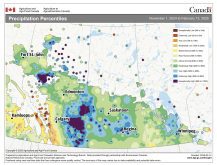Thousands of Manitobans lost tens of millions of dollars when the Crocus Fund imploded. Thousands of Canadians lost a lot more when various other labour-sponsored venture capital funds failed.
They were a nifty investing device, popular in the 1990s and 2000s, invented by governments to convince us to achieve multiple goals with the same buck. We could invest in the Canadian economy, plow our money into start-up businesses that would create jobs and found new industries, get a huge tax break, and set up the population for decent retirements all at the same time.
Read Also

VIDEO: Bittersweet harvest for this family farmhand
Bruce Burnett helps his brother harvest wheat and canola for the last time on the family farm in Manitoba where they both grew up.
For many of us, these funds — playing big roles in retirement savings — turned out to be disasters. Many failed to do much more than piss away money and shatter hopes.
Those that failed all had their own unique tales of woe, but common to them appeared to be a fatal lack of focus. They didn’t really know what they were supposed to be, so they tried to be a number of things, and failed at them all.
It’s dangerous to mess around with refined tools of economic, business and financial management by latching-on secondary considerations. Those secondary features can kill the efficiency of the tools, misdirect their actions, and turn-off the very people who should be using them.
That’s why it was good to hear from the head of Manitoba crop insurance that he’s not gung-ho about larding-on extra criteria for a program that’s supposed to focus on production risk.
“It’s a challenge,” said Manitoba Agricultural Services Corp. chief executive officer Jared Munro about recent pressure to consider including environmental best-practices in crop insurance rates.
“In general, Agri-Insurance across the board has attempted to be management-neutral. Let farmers make decisions that are best for their operations. But obviously we’re entering a bit of a different time here.”
Right now, there is pressure on both provincial and federal governments to get farmers to reduce their greenhouse gas emissions. Politicians, bureaucrats, activists and consultants are coming up with lots of ideas about how to get farmers to farm the way they think farmers should. Some ideas involve carrots. The others employ the stick.
The notion of cross compliance in government programs isn’t new. If you want to qualify for this-or-that program, you also have to be doing this-or-that. It’s the practice of holding one program like a hammer above another one to affect how people approach them. If you want to get the benefit of program A, your hopes will be flattened unless you do what it takes to hold off the hammer.
It sounds good in theory, but it’s very hard to do effectively or efficiently. Just look at how hard it is becoming to apply and get results from the federal carbon tax, which is about the simplest stick-based policy you can imagine.
Adding criteria for “best management practices” to crop insurance, even if it’s just in terms of premium cuts for best practices, could become difficult. Worse, it could distract the people who should be keeping a razor-sharp focus on making crop insurance a fabulous program that almost every farmer wants to use (the situation in Manitoba today.)
If the program becomes frustrating or seemingly not worth the bother, people won’t bother with it.
You hear similar concerns raised when politicians and others suggest central banks include other concerns in their purview, going beyond financial system and price stability. How about diversity? Maybe central bank folk should spend time thinking about how to use their complex financial tools to promote diversity and inclusivity and other current social concerns.
Perhaps central banks could join the fight against climate change. Wouldn’t that be wonderful?
Alas, these are perilous thoughts. Central banks are effective because they stick to their knitting and don’t bumble into every trending topic. They’ve got more than enough to worry about in their own area without getting distracted and mucking up the financial system and economy. There are other parts of the government and society for dealing with non-financial matters.
It’s great to see governments trying to find ways to encourage farmers to adopt the best greenhouse gas reducing practices possible. As this column highlighted last week, Manitoba’s new efficiency-based fertilizer calculator offers a fresh approach to encouraging farmers to avoid the fertilizer losses that end up as emissions.
It doesn’t ignore profitability to look at emissions, but looks at emissions as a manifestation of profits lost through inefficiency.
However, governments should be leery of messing with crop insurance. It’s too important to jeopardize.
When the Crocus Fund failed, one of the managers said that he didn’t really feel that it had failed. It had operated with “multiple bottom lines” and to his figuring, some of those had ended up in the black.
The people whose retirement savings were lost probably didn’t feel the same way, but when one program has multiple bottom lines, who’s to say what’s to be judged a success or a failure?That’s the kind of confused focus that farmers can’t afford to see become involved in critical farm programs like crop insurance. The farmer only has one bottom line and that needs to be in the black.


















